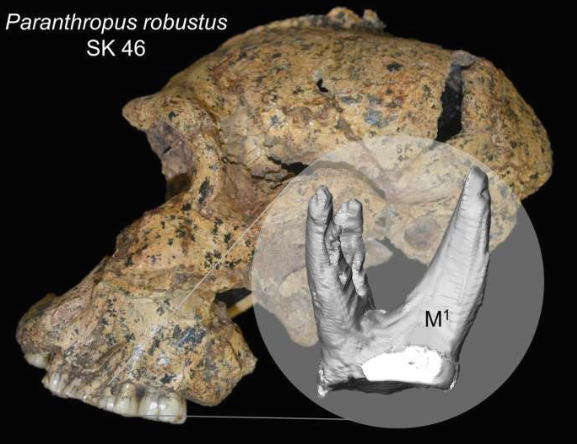Since the discovery of the fossil remains of Australopithecus africanus from Taung nearly a century ago, and subsequent discoveries of Paranthropus robustus, there have been disagreements about the diets of these two South African hominin species. By analyzing the splay and orientation of fossil hominin tooth roots, researchers of the MPI for Evolutionary Anthropology, the University of Chile and the University of Oxford now suggest that Paranthropus robustus had a unique way of chewing food not seen in other hominins.  Paranthropus robustus fossil from South Africa SK 46 (discovered 1936, estimated age 1.9-1.5 million years) and the virtually reconstructed first upper molar used in the analyses. Credit: Kornelius Kupczik, Max Planck Institute for Evolutionary Anthropology |


